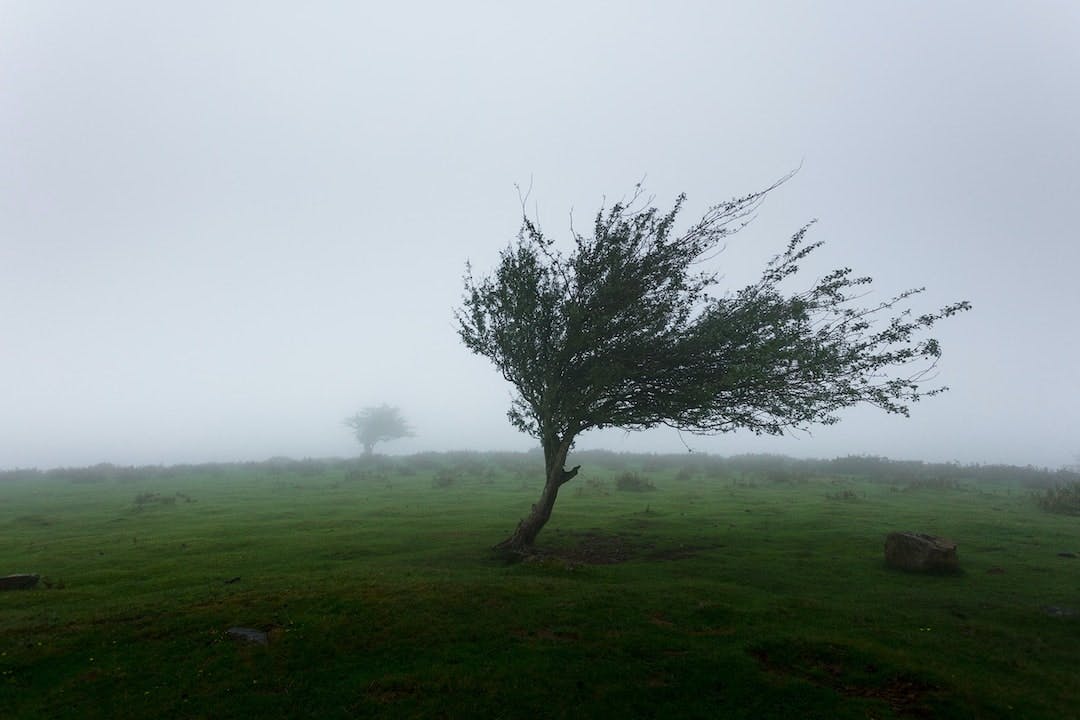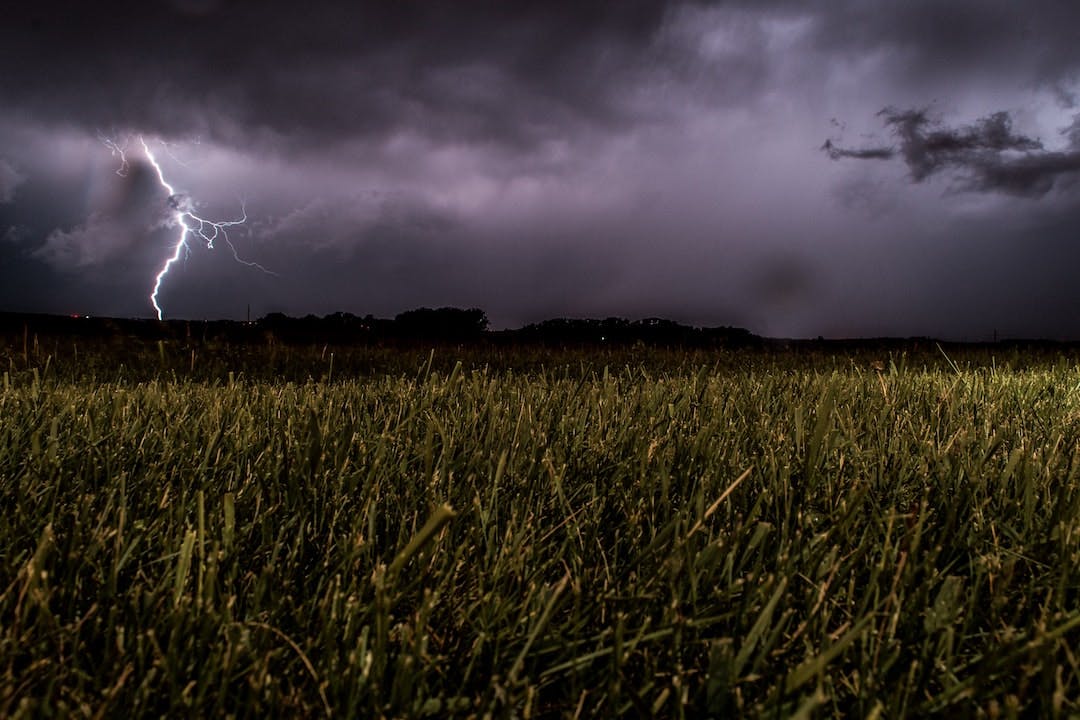Published Jan 24, 2023
Drones and Weather
Flying a drone in different weather conditions can be a challenging task, but with the right knowledge and preparation, it can also be a rewarding experience. Whether you're a hobbyist or a professional drone pilot, understanding how to fly in different weather conditions is crucial for ensuring the safety of your drone and accomplishing a set task.

Flying a drone in different weather conditions can be a challenging task, but with the right knowledge and preparation, it can also be a rewarding experience. Whether you're a hobbyist or a professional drone pilot, understanding how to fly in different weather conditions is crucial for ensuring the safety of your drone and accomplishing a set task.

Hot Weather
Why does hot weather affect your drone's flight?
Hot weather can have a significant impact on the performance of drones. These are a few ways in which high temperatures can affect drone operation:
Battery Drain: High temperatures can cause the battery to drain faster, reducing the amount of time the drone can stay in the air. This can be a problem for drones that are being used for extended periods of time, such as for aerial photography or mapping.
Overheating: High temperatures can cause the motors and other components to overheat, which can lead to malfunctions or even damage. This can be a major problem for drones that are being used in demanding conditions, such as for search and rescue or industrial inspections.
Reduced Lift: Hot air is less dense than cold air, making it harder for the drone to generate lift and stay in the air. This can be an issue for drones used at high altitudes or in areas with strong winds.
It's also worth noting that most of the drones come with thermal protection features which will prevent them from overheating and damage. Always check the user manual of the drone you're using to know more about it.
How to fly extended periods of time in extremely hot weather conditions
If you need to fly a drone in extremely hot weather conditions (think > 35℃), here are a few tips to help ensure a successful flight:
Monitor the temperature: Keep an eye on the temperature of the drone's components, especially the battery, and motors. If they start to get too hot, take a break and let them cool down before continuing the flight. The heat can also cause the battery to drain faster than usual. Be prepared to end the flight sooner than you expect.
Keep your drone on the move and reduce hovering time: When a drone is moving, it generates airflow over its components, which can help to cool them down. Hovering will consume more power, which can drain the battery quickly in hot weather. That being said, there may be some specific situations where hovering is required such as surveying a specific area or taking a picture. In these cases, it's important to monitor the temperature of the drone's components and take a break if necessary, to let the drone cool down before continuing the flight.
Fly in the morning or evening: Try to fly the drone in the early morning or late evening when temperatures are cooler. Avoid flying during the hottest part of the day, when temperatures are at their peak. In Malaysia, the average temperature in the morning and evening is around 25-30°C (77-86°F), while the average temperature in the afternoon is around 30-35°C (86-95°F). These temperatures can be higher in some areas, especially during the hot and humid months of the year. Flying a drone in the morning or evening can also provide better lighting conditions, as the sun is not at its highest point in the sky. This can make it easier to see your drone and avoid obstacles.
Use a cooling fan: A cooling fan can help keep the drone's components cool. If you don't have a cooling fan, you can use a simple hand-held fan or even a piece of cardboard to create a makeshift cooling system. Our Autel EVO II Series camera drones come equipped with a built-in cooling fan: Learn more
Provide shade: Try to find a shaded area to fly the drone in. This can help keep the drone cool and prevent the battery from draining quickly.
Check the weather forecast: Always check the weather forecast before flying to make sure you're aware of the conditions you'll be flying in. Avoid flying in extremely hot weather conditions if at all possible. There are many weather websites available that provide up-to-date weather forecasts, such as Weather.com, and AccuWeather, or even free weather apps such as UAVForecast. Look for information that may affect your drone flight, such as wind speed, temperature, precipitation, and cloud cover.
Keep in mind that high temperatures can affect the stability and control of the drone, so always be careful and fly cautiously.

Windy Weather
How should I fly a drone in windy weather?
Flying a drone in windy weather can be challenging, but with the right precautions, it's still possible to have a successful flight. Here are a few tips to help you fly a drone in windy conditions:
Check the weather forecast: Before you fly, check the weather forecast and wind speeds. Avoid flying in extremely windy conditions if at all possible. Beginners should avoid flying their drones in winds above 10-15 mph (16-24 km/h). With experience, you can increase the wind speed limit to 20 mph (32 km/h). A simple rule of thumb would be that a drone moving at 60 mph (96 km/h) should be able to handle wind speeds of up to 32 mph (51 km/h).
Choose the right location: Try to find a location that is sheltered from the wind, such as behind a building or in a park. If that's not possible, try to fly in an area with minimal obstacles that can affect the wind flow.
Adjust the drone's settings: Adjust the drone's settings to help it handle the wind better. Increasing the flight speed of the drone can help to counteract the wind's impact on the drone's stability and control. Making the camera's field of view narrower and the tilt angle more horizontal can help to reduce the wind's impact on image stability. That being said, it is essential to experiment with different camera tilt angles and find the one that works best for you and the specific conditions you are flying in.
Fly in headwinds: If possible, try to fly the drone into the wind. The drone can use its own forward motion to counteract the wind's impact, making it easier to maintain stability and control. This can help to reduce the risk of the drone getting blown off course or crashing.
Use a higher altitude: When flying in windy conditions, try to fly the drone at a higher altitude. At higher altitudes, the wind is less likely to be as strong or turbulent as it is at lower altitudes. The drone is also less affected by the wind blowing over the ground. However, it's important to note that flying at a higher altitude will require more energy and power from the drone and its battery, so it's important to monitor the battery life and be prepared for a shorter flight time.
Monitor the drone's battery: Windy conditions can cause the drone's battery to drain faster, so make sure to keep an eye on the battery level and be prepared to end the flight sooner than you expect.
Keep in mind that wind can affect the stability and control of the drone, so always be extra careful and fly cautiously.

Rainy Weather
Why does rainy weather affect your drone's flight?
Rain can damage sensitive electronic components: Raindrops can penetrate the drone's shell and cause damage to its sensitive electronic components, including its GPS, cameras, and motors. This can lead to performance issues and even failure of the drone during flight.
Reduced visibility: Rain can reduce visibility, making it more difficult to control the drone and see where it's flying. This can increase the risk of crashes and other accidents.
Interference with sensors: Rain can interfere with the drone's sensors, including its GPS, which can cause navigation errors and make it difficult to fly the drone properly.
Increased risk of electric shock: Flying a drone in heavy rain can increase the risk of electric shock and other safety hazards. The electrical components of the drone can be damaged by the rain, and the drone itself may become charged with electricity, increasing the risk of injury to the operator and others nearby.
Use a higher altitude: When flying in windy conditions, try to fly the drone at a higher altitude. At higher altitudes, the wind is less likely to be as strong or turbulent as it is at lower altitudes. The drone is also less affected by the wind blowing over the ground. However, it's important to note that flying at a higher altitude will require more energy and power from the drone and its battery, so it's important to monitor the battery life and be prepared for a shorter flight time.
Monitor the drone's battery: Windy conditions can cause the drone's battery to drain faster, so make sure to keep an eye on the battery level and be prepared to end the flight sooner than you expect.
That being said, Alphaswift's lineup of Delivery Drones, Custom Drones, Camera Drones, and Agri Drones all have a minimum IP65 waterproof level and can be flown in light rain conditions. Do check out the relevant pages to know more about our specifications or reach out to us for further inquiries.
In conclusion, flying drones in different weather conditions can impact the performance and safety of the device. Factors such as wind, rain, heat, and temperature fluctuations can all affect a drone's ability to fly and function properly. It's important to consider these conditions and choose the right time and place to fly, based on the specific capabilities and limitations of your drone. Additionally, it's important to always follow local and federal regulations and guidelines, as well as safe flying practices, to ensure that your drone flight is safe and successful.